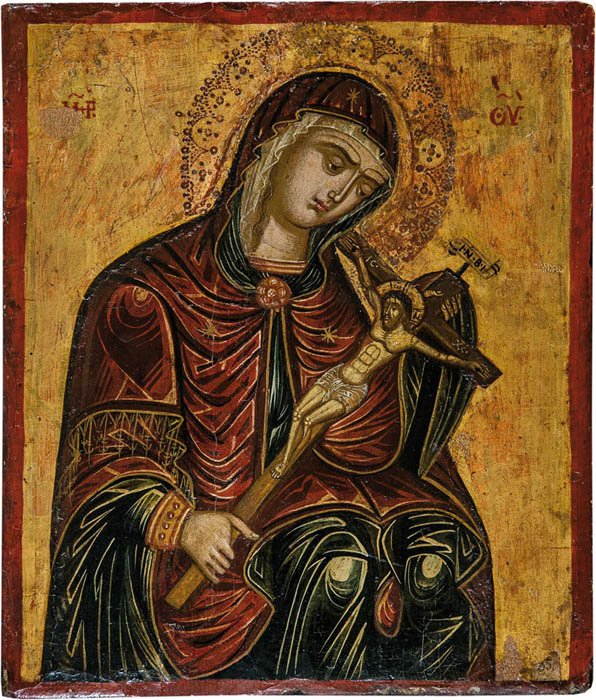
Okhtyrka, also known by its Russian variant Akhtyrka, is a small city in Ukraine, a town of Hussar and Cossack Fame. It was also once a regional seat of Sloboda Ukraine and the Ukrainian SSR. It is home to historical and religious places of interest. More
In the town of Akhtyrka, there had long been a parish dedicated to the Protection of the Most-pure Theotokos (The Virgin Mary). In 1739, Fr. Daniel Vasiliev was serving at that church. Once, as he was mowing the grass in his garden he saw an icon of the Mother of God praying before the crucified Lord Jesus Christ, and shining with an indescribable light. In awe, Fr. Daniel carried it into his house. Three years later, while dozing, he dreamt of the Mother of God, and heard her direct that he wash the icon with clean water, and then drape a cover over the icon. The priest did as he was told, intending to later pour the water into the river, he put the water into a container. He again fell asleep, whereby the Most-holy Theotokos said to him: “Keep this water; it will heal all those who suffer from the fever.” The priest had a daughter who suffered with fever. Awaking, he gave her some of the water to drink, and she immediately was healed.
Thereafter, all those who suffered with fever would run to the Most-holy Theotokos, and as soon as they drank of the water from her icon, would be healed. Recognizing the miraculous signs coming from the icon, the priest took it to his parish church. There the icon shone forth with the power of working miracles.
One noteworthy miracle was to Elizabeth, the ill wife of General Vedel, who came and fervently prayed before the icon that she might be healed. The next night she saw the Mother of God in a dream, and heard her direction: “You ask in vain for healing from illness. You do not need that. You will soon depart from life. Give all of your possessions to the churches and to the poor. That sacrifice will be for the good of your soul.” The ill one answered, “O Mother of God, I have children, and if I give away my estate, my children will be left in extreme poverty and need.” In response, the Mother of God said, “Do not be concerned for your children. I will be their eternal protectress.” Then, the Mother of God became invisible. Elizabeth, five days later, as told to her by the Mother of God, peacefully reposed. Empress Catherine II, learning of the miraculous protection promised to the children of the late Mrs. Vedel, took her two daughters into her care, and later gave them in marriage, one to Count Palen, the other to Count Chernishev. This miraculous icon used to be in the cathedral church of the town of Akhtyrka, Kharkov province. More
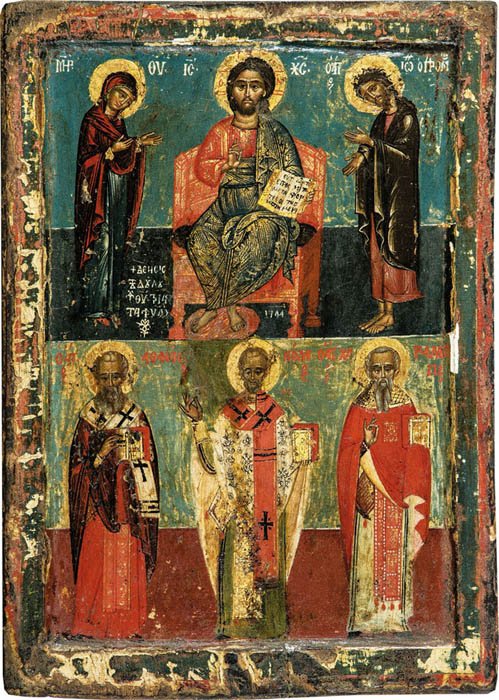
Saint Athanasius of Alexandria (c. 296–298 – 2 May 373), was the twentieth bishop of Alexandria (as Athanasius I). His episcopate lasted 45 years (c. 8 June 328 – 2 May 373), of which over 17 were spent in five exiles ordered by four different Roman emperors. Athanasius is a renowned Christian theologian, a Church Father, the chief defender of Trinitarianism against Arianism, and a noted Egyptian leader of the fourth century.
Conflict with successive Roman emperors shaped Athanasius's career. In 325, at the age of 27, Athanasius began his leading role against the Arians as his bishop's assistant during the First Council of Nicaea. Roman emperor Constantine the Great had convened the council in May–August 325 to address the Arian position that the Son of God, Jesus of Nazareth, is of a distinct substance from the Father. Three years after that council, Athanasius succeeded his mentor as archbishop of Alexandria. In addition to the conflict with the Arians (including powerful and influential Arian churchmen led by Eusebius of Nicomedia), he struggled against the Emperors Constantine, Constantius II, Julian the Apostate and Valens. He was known as "Athanasius Contra Mundum" (Latin for Athanasius Against the World). More
Arianism is a nontrinitarian belief which asserts that Jesus Christ is the Son of God, but is entirely distinct from and subordinate to God the Father. Arianism is defined as those teachings attributed to Arius, which are in opposition to current mainstream Christian teachings on the nature of the Trinity and the nature of Christ. It was first attributed to Arius (c. AD 250–336), a Christian presbyter in Alexandria, Egypt. The Arian concept of Christ is that the Son of God did not always exist, but was created by—and is therefore distinct from—God the Father. This belief is grounded in the Gospel of John (14:28) passage: "You heard me say, 'I am going away and I am coming back to you.' If you loved me, you would be glad that I am going to the Father, for the Father is greater than I." More
Saint Nicholas (15 March 270 – 6 December 343), also called Nikolaos of Myra, was a historic 4th-century Christian saint and Greek Bishop of Myra, in modern-day Demre, Turkey). He had a reputation for secret gift-giving, such as putting coins in the shoes of those who left them out for him, a practice celebrated on his feast day―St Nicholas Day (6 December, and thus became the model for Santa Claus, whose modern name comes from the Dutch Sinterklaas, itself from a series of elisions and corruptions of the transliteration of "Saint Nikolaos". His reputation evolved among the faithful, as was common for early Christian saints. In 1087, part of his relics (about half of his bones) were furtively transported to Bari, in Apulia, Italy; for this reason, he is also known as Nikolaos of Bari. The remaining bones were taken to Venice in 1100.
Saint Nicholas is the patron saint of sailors, merchants, archers, repentant thieves, children, brewers, pawnbrokers and students in various cities and countries around Europe. More
Saint Charalambos was an early Christian bishop in Magnesia, a region of Asia Minor. He lived during the reign of Septimius Severus (193-211), when Lucian was Proconsul of Magnesia. It is believed that at the time of his martyrdom in 202, Charalambos was 113 years old.
Charalambos spread the Gospel in that region for many years. However, when news of his preaching reached the authorities of the area, the proconsul Lucian and military commander Lucius, the saint was arrested and brought to trial, where he confessed his faith in Christ and refused to offer sacrifice to idols.
Despite his advanced age, he was tortured mercilessly. They lacerated his body with iron hooks, and scraped all the skin from his body. The saint had only one thing to say to his tormentors: "Thank you, my brethren, for scraping off the old body and renewing my soul for new and eternal life."
More tortures, the legend says, were wrought upon the saint after he was brought to Septimius Severus himself. Condemned to death and led to the place of execution, Charalambos prayed that God grant that the place where his relics would repose would never suffer famine or disease. After praying this, the saint gave up his soul to God even before the executioner had laid his sword to his neck. Tradition says that Severus' daughter Gallina[4] was so moved by his death, that she was converted and buried Charalambos herself. More
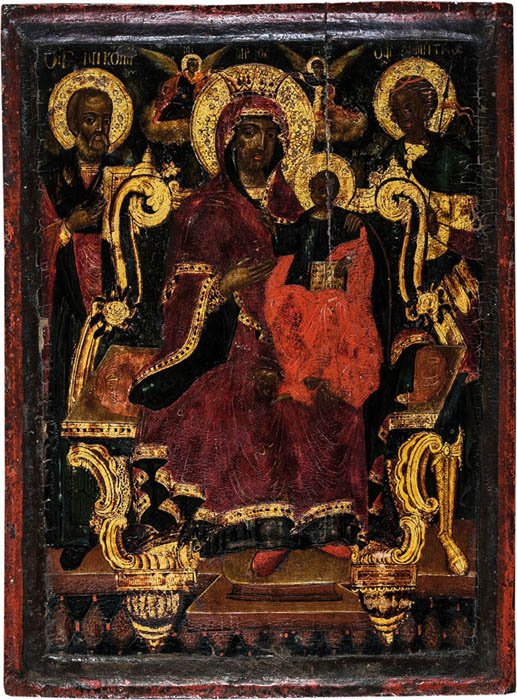
The theme of the Madonna and Child was rare in the first centuries of early Christian art (c. 3rd–6th century). In 431, however, the establishment of Mary’s title of Theotokos (“Mother of God”) definitively affirmed the full deity of Christ. Thereafter, to emphasize this concept, an enthroned Madonna and Child were given a prominent place in monumental church decoration. More
St. Nicholas: See above
Saint Demetrius of Thessaloniki is a Christian martyr of the early 4th century AD. During the Middle Ages, he came to be revered as one of the most important Orthodox military saints, often paired with Saint George. In the Roman Catholic church he is most commonly called "Demetrius of Sermium."
The earliest written accounts of his life were compiled in the 9th century, although there are earlier images of him, and the 7th-century Miracles of Saint Demetrius collection. According to these early accounts, Demetrius was born to pious Christian parents in Thessaloniki, Illyricum in 270. The biographies have Demetrius as a young man of senatorial family who was run through with spears in around 306 AD in Thessaloniki, during the Christian persecutions of Diocletian and Galerian.
St. Demetrius was initially depicted in icons and mosaics as a young man in patterned robes with the distinctive tablion of the senatorial class across his chest. Miraculous military interventions were attributed to him during several attacks on Thessaloniki, and he gradually became thought of as a soldier: a Constantinopolitan ivory of the late 10th century shows him as an infantry soldier (Metropolitan Museum of Art). But an icon of the late 11th century in Saint Catherine's Monastery on Mount Sinai shows him as before, still a civilian. More
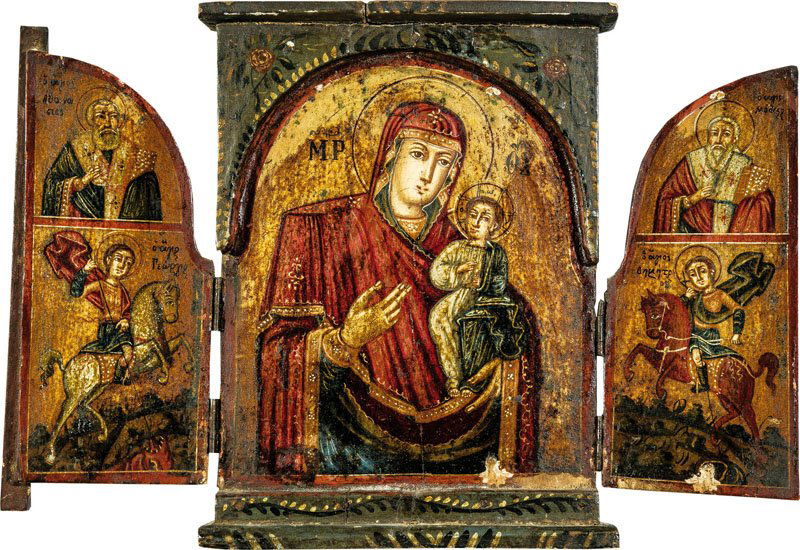
A triptych ("three-fold"), is a work of art (usually a panel painting) that is divided into three sections, or three carved panels that are hinged together and can be folded shut or displayed open. It is therefore a type of polyptych, the term for all multi-panel works. The middle panel is typically the largest and it is flanked by two smaller related works, although there are triptychs of equal-sized panels. The form can also be used for pendant jewelry. More
Saint George (AD 275–281 to 23 April 303) was a soldier in the Roman army who later became venerated as a Christian martyr. His parents were Christians of Greek background; his father Gerontius was a Roman army official from Cappadocia and his mother Polychronia was a Christian from Lydda in the Roman province of Syria Palaestina. Accounts differ regarding whether George was born in Cappadocia or Syria Palaestina, but agree that he was raised at least partly in Lydda. Saint George became an officer in the Roman army in the Guard of Diocletian, who ordered his death for failing to recant his Christian faith.
In hagiography, Saint George is one of the most venerated saints. He is immortalized in the myth of Saint George and the Dragon and is one of the Fourteen Holy Helpers), and is regarded as one of the most prominent military saints. More
Saint Demetrius of Thessaloniki: See above
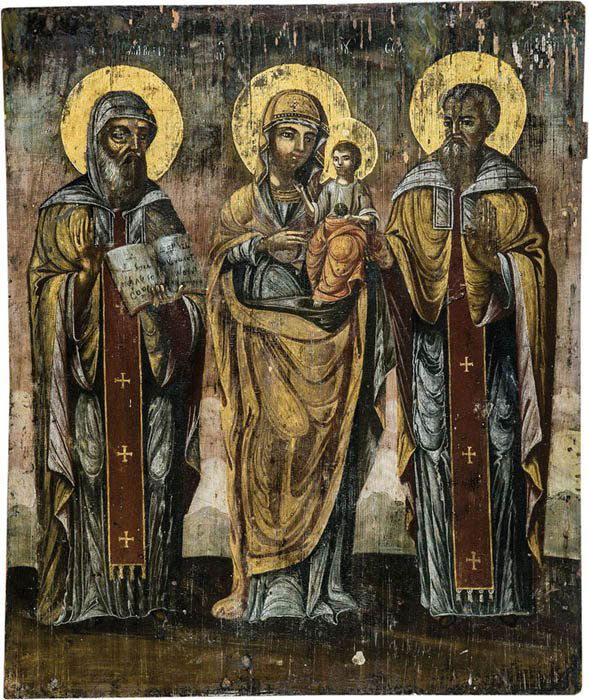
Wooden Icons were likely to warp. Slats inserted in the back to prevent warping, and that name is SHPONKI. One usually finds two SHPONKI, one coming in from either side toward the center, but occasionally just one SHPONKA
Gesso, from the Latin gypsum, is a white paint mixture consisting of a binder mixed with chalk, gypsum, pigment...
A Hodegetria (literally: "She who shows the Way"; or Virgin Hodegetria, is an iconographic depiction of the Theotokos (Virgin Mary) holding the Child Jesus at her side while pointing to Him as the source of salvation for mankind. In the Western Church this type of icon is sometimes called Our Lady of the Way.
The most venerated icon of the Hodegetria type, regarded as the original, was displayed in the Monastery of the Panaghia Hodegetria in Constantinople, which was built specially to contain it. Unlike most later copies it showed the Theotokos standing full-length. It was said to have been brought back from the Holy Land by Eudocia, the Empress of Theodosius II (408–450), and to have been painted by Saint Luke. The icon was double-sided, with a crucifixion on the other side, and was "perhaps the most prominent cult object in Byzantium".
The original icon has probably now been lost, although various traditions claim that it was carried to Russia or Italy. There are a great number of copies of the image, including many of the most venerated of Russian icons, which have themselves acquired their own status and tradition of copying.
Luke the Evangelist is one of the Four Evangelists/authors of canonical Gospels of Jesus Christ. Luke was a native of the Hellenistic city of Antioch in Syria. The early church fathers ascribed to him authorship of both the Gospel according to Luke and the book of Acts of the Apostles, which originally formed a single literary work, referred to as Luke–Acts.
The New Testament mentions Luke briefly a few times, and the Pauline epistle to the Colossians refers to him as a doctor; thus he is thought to have been both a physician and a disciple of Paul. Christians since the faith's early years have regarded him as a saint. He is believed to have died a martyr, although accounts of the events do vary.
The Roman Catholic Church and other major denominations venerate him as Saint Luke the Evangelist and as a patron saint of artists, physicians, surgeons, students and butchers. More
Aelia Eudocia Augusta] (c. 401–460) was the wife of Theodosius II, and a prominent historical figure in understanding the rise of Christianity during the beginning of the Byzantine Empire. Eudocia lived in a world where Greek paganism and Christianity were existing side by side with both pagans and unorthodox Christians being persecuted.[1] Although Eudocia's work has been mostly ignored by modern scholars, her poetry and literary work are great examples of how her Christian faith and Greek upbringing were intertwined, exemplifying a legacy that the Byzantine Empire left behind on the Christian world. More
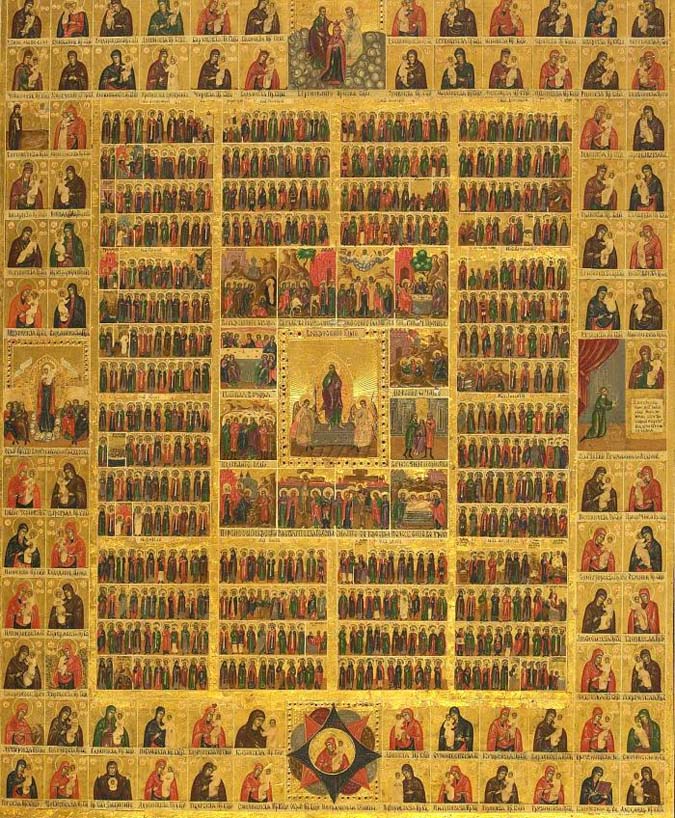
VM Sorokaty
A Hodegetria (literally: "She who shows the Way"; or Virgin Hodegetria, is an iconographic depiction of the Theotokos (Virgin Mary) holding the Child Jesus at her side while pointing to Him as the source of salvation for mankind. In the Western Church this type of icon is sometimes called Our Lady of the Way.
The designation of Hodegetria or “She Who Points the Way” did not originate from Mary’s gesture toward her son. Instead, it refers to the famous prototype of the miraculous icon of the Virgin—the model for all other icons of this type—belonging to the Hodegon Monastery of Constantinople.
No evidence exists for the Hodegon Monastery, or any Hodegetria icons, before the Byzantine iconoclastic controversies of the 700s and early 800s.
The Virgin Hodegetria came to prominence in the early 11th century, triggering the creation of a myth that linked its origin with the early history of Byzantium. As a way of supporting the legitimacy of icon veneration during the Iconoclasm (controversies that barred the production and use of figural images, spanning roughly a century 726–87 and 815–43) this specific icon was said to trace back to a mid-8th-century legend of a portrait of Mary painted during her lifetime by the Apostle Luke. By claiming the involvement of the hand of the evangelist, the legend around the Hodegetria was fabricated, evidence for the apostolic origins and divine approval of images. More
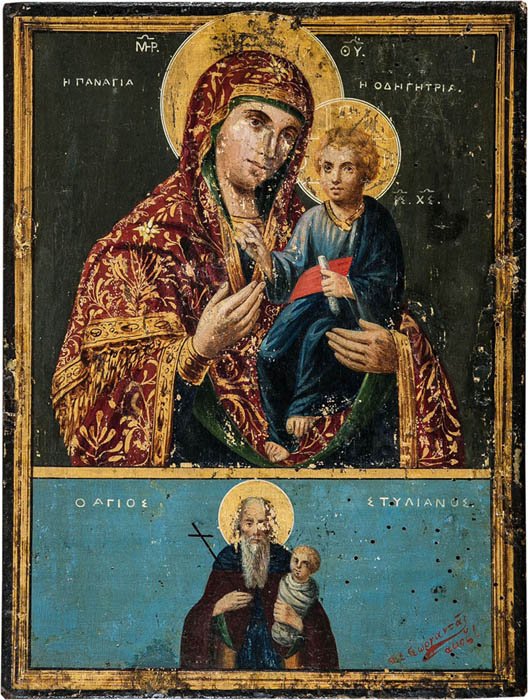
Maphorion: a garment covering the head and shoulders, mentioned in papyri of the 4th–6th Century
Chrysographie: a technique used in manuscripts, letters, or painted objects (crowns, nimbuses) where a gold tincture has been designed. In the early Middle Ages were also writings held exclusively in gold letters in both the Byzantine and the Western culture. These fonts are also calledCodex Aureus . In the High Middle Ages, the use of gold was reduced and limited mostly to larger initials.
Saint Stylianos was born during the 6th century in Adrianopolis (in modern day Turkey) into a very wealthy family. At a young age, Stylianos joined the hermits of the desert with a view toward cleansing his soul and pledging his life to Jesus Christ. Unlike most other hermits, however, he did not withdraw from society altogether, preferring to occasionally go among the people for whatever good he might do.
According to the church tradition, one night while he prayed, Stylianos felt a divine presence of the Holy Spirit. The next day, with a spirit of exultation and serenity he had never known before, he started his customary rounds, wherein he counselled and comforted, he felt compelled to place his hand on a stricken child, something he had not up to that time dared to do; he felt the power of the Lord being transferred to the ailing youngster through his extended arm. The child immediately recovered, and thenceforth Stylianos was sought after by every suffering soul for miles around, young and old. His cave became a magnet for the sick and suffering, many of whom received complete cures.
During this period, Stylianos concerned himself primarily with children, not just the physically afflicted but also with those who were in need of spiritual guidance. Families from all walks of life were said to have entrusted to Stylianos the enlightenment of their children, and he was forced to seek out larger headquarters and to recruit from the ranks of his hermit friends the assistance needed to tend to so many. His was probably the first day-care centre in the world, where mothers could safely leave their children while tending to other matters of the home.
Stylianos was to become the patron saint of children yet to be born, owing to stories of his miraculous intercession for a young woman who helped him with children but could bear none of her own. When the woman conceived, her husband out of sheer joy spread the word of this miracle, and before long many barren women came to the great hermit. More

Maphorion: garment covering the head and shoulders, mentioned in papyri of the 4th–6th Century
Chiton: a long woollen tunic worn in ancient Greece.
Mother of God Vladimirskaya: The Mother of God of Vladimir, also known under the name of Our Lady of Vladimir, Virgin of Vladimir Vladimirskaya, Our Lady of Vladimir, Our Lady of Tenderness, The Lady Who Saves Russia, is one of the icons orthodox most revered in Russia. The Theotokos (Greek Theotokos: Marie) is considered the patron saint of Russia.
The miraculous image given the title, Our Lady of Vladimir, is known as an Eleousa,the Greek word meaning, Mother of Tenderness. The Christ Child nestles tenderly close to his mother, he gazes at her and is so closely linked to her that his left arm embraces her fully. His right hand gently touches her left cheek. The original image is a large painting of the type known as the St. Luke icons. Mary looks out at the people. Yet, there is no doubt that she is intimately united to her Divine Son.
The origin of the ancient Marian icon, Our Lady of Vladimir, can be traced back to 1125. The oldest known representation of Our Lady of Vladimir was commissioned in Constantinople by a Russian, who then had the painting taken from city to city during the period of united Ukranian-Russian history. In 1169, Duke Andrej Bogoljubskij had the icon brought from Kiev to the new cathedral of Vladimir. Due to the honor and reverence of the people, who attributed gracious assistance to Our Lady's help throughout the Ukraine, a large cathedral was built for her in Vladimir.
When the Mongol invasion threatened Moscow in 1395, the original icon was brought to Moscow, where she was honored as the unconquerable shield of the Russian people. Important state transactions took place before her image; her blessing was sought before battle. In time, Our Lady of Vladimir became the sign of the Russian Orthodox Church. More
Vladimir is a city in Russia and the administrative center of the oblast Vladimir. Vladimir is part of the Golden Ring of ancient Russia around Moscow.
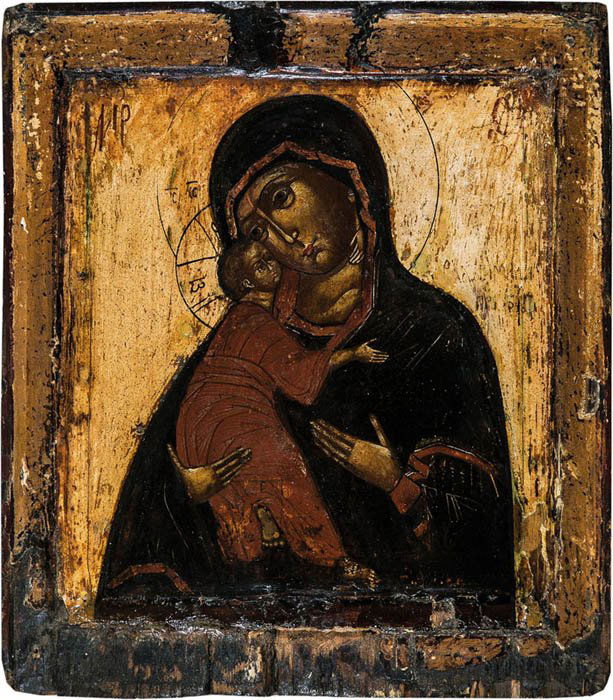
Description: See Above


Kazan is the capital and largest city of the Republic of Tatarstan, Russia. It is the eighth most populous city in Russia, and lies at the confluence of the Volga and Kazanka Rivers in European Russia.
Our Lady of Kazan, Black Madonna of Kazan (so-called both because of the often dusky color of their skin (in some cases, after cleaning, attributed to the accumulation of generations of soot from candles burnt under the images) and because in many cases they were either excavated from underground ruins or were originally worshipped in underground caverns, perhaps due to Marian persecutions). The history of the convent of Our Lady of Kazan is inseparably linked with finding, glorifying and honoring the miracle-working icon of Our Lady of Kazan in Russia. This icon is one of the most honored and esteemed in the Russian Church.
At the beginning of July, 1579 there was a conflagration in Kazan, the capital of Tatarstan. The fire enveloped quite a district that joined the Kremlin's northeast. The yard of Danila Onuchin, the strelets sotnik (Russian light infantry command of a hundred men in Age of Empires), were burned down. Many families had lost their homes, and had to rebuild before the Russian winter would come. Among those people trying to restore their homes was Daniel Onuchin. He had a daughter Matrona, nine years old.
The Mother of God appeared in a dream to Matrona and commanded her to find Her icon, hidden in the ground by secret confessors of Orthodoxy, in the time of Moslem rule. Thrice the Mother of God appeared and pointed out the spot, where the wonder working icon had been concealed. Finally, Matrona, with her mother began to dig in the indicated place and they found the sacred icon. To the place of the miraculous discovery came archbishop Jeremii at the head of his clergy and transported the holy image into a church of Saint Nicholas situated nearby; then, amidst a church procession they transferred it to the Annunciation cathedral – the first Orthodox temple in the city of Kazan, erected by tsar Ivan the Terrible. During the procession there occurred the healing of two blind men – Iosif and Nikita.
Tsar Ivan the Terrible gave orders to build at the place of its appearance a temple in honour of the Kazan Icon, and to found there also a women's monastery. Matrona and her mother, instrumental in finding the sacred icon, accepted monastic tonsure at this monastery.
Invocation of the Virgin Mary through the icon was credited to the Russian commanders, Dmitry Pozharsky and Mikhail Kutuzov, with helping the country to repel the Polish invasion of 1612, the Swedish invasion of 1709, and Napoleon's invasion of 1812.
On the night of June 29, 1904, the icon was stolen from the church in Kazan where it had been kept for centuries (the cathedral was later blown up by the communist authorities). Thieves apparently coveted the icon's gold frame. The Orthodox Church interpreted the disappearance of the icon as a sign of tragedies that would plague Russia after the image of the Holy Protectress of Russia had been lost. Indeed, the Russian peasantry was wont to credit all the evils of the Revolution of 1905, as well as Russia's defeat in the Russo-Japanese War, to the desecration of the image. More
Vladimir Putin ordered that the Black Madonna of Kazan, the holiest icon of the Russian Orthodox Church, be flown over the Black Sea, many believed he wished to secure blessings for the Winter Olympics in Sochi.

Rostov is a town in Yaroslavl Oblast, Russia, one of the oldest in the country. It is located on the shores of Lake Nero
Saint Isaiah of Rostov (fl. 1062 – died 1089 or 1090) was a Russian Christian missionary and bishop. Isaiah was born near Kiev. He was tonsured at Kiev Pechersk Lavra, and became abbot of Saint Dmitry's Monastery. In 1077, he became the second bishop of Rostov. As Christianity was not yet well established in the area, he spent his tenure converting pagans, destroying idolatry and encouraging the spread of Christianity.
St Leontius the Bishop and Wonderworker of Rostov. A Greek from Constantinopole, Leontius became a monk at the famous Monastery of Caves in Kiev (Ukraine). He was first monk of this house to become a bishop when he was appointed to Rostov (Yaroslavsk) in 1501. Although persecuted by the pagans, he became their apostle. Reputed to have had a gift of miracles, he did not escape death at their hands; however, this was from the ill-treatment he received rather than by formal sence of death. Leontius was the first martyr who was also a priest (heiromartyr).
St Ignatius the Bishop and Wonderworker of Rostov. Saint Ignatius was Bishop of Rostov, and shepherded his flock for twenty-six years. After his death on May 28, 1288, his body was broght to the church. Some people saw him leave his coffin, and float in the air above the church. He blessed the people and the city, then went back to his coffin.


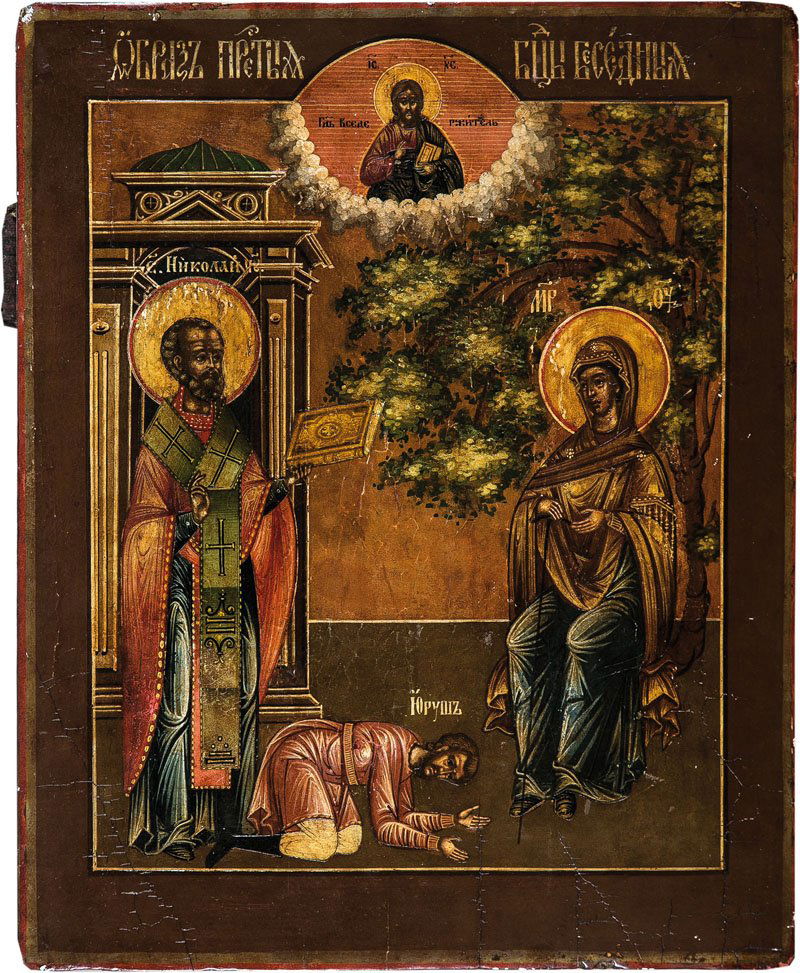
Sveti Jurij is a village in the Municipality of Grosuplje in central Slovenia. The area is part of the historical region of Lower Carniola.
Sveti Jurij is also known locally as Šent Jurij (Št. Jurij). The name of the settlement was changed from Sveti Jurij pri Grosupljem (literally, 'Saint George near Grosuplje') to Podtabor pri Grosupljem (literally, 'below the fort near Grosuplje') in 1952. The name was changed on the basis of the 1948 Law on Names of Settlements and Designations of Squares, Streets, and Buildings as part of efforts by Slovenia's postwar communist government to remove religious elements from toponyms. The name Sveti Jurij was restored in 1992. More
Saint Nicholas; also called Nikolaos of Myra, was a historic 4th-century Christian saint and Greek Bishop of Myra, in Asia Minor. Because of the many miracles attributed to his intercession, he is also known as Nikolaos the Wonderworker. More
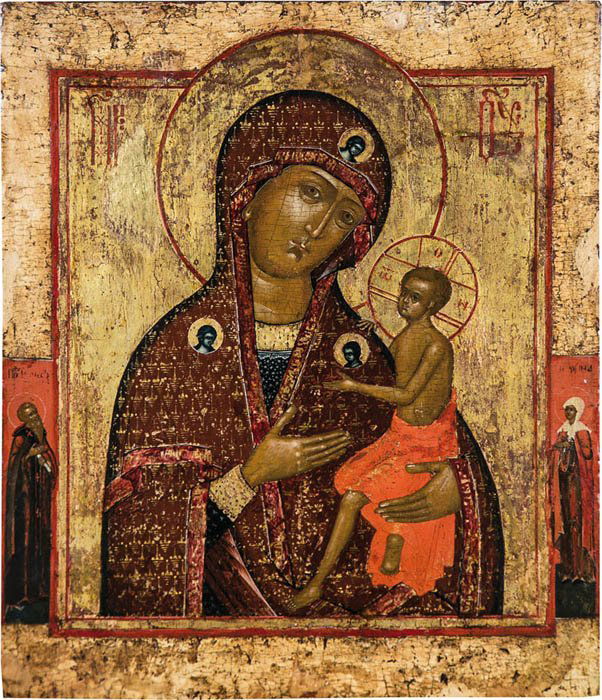
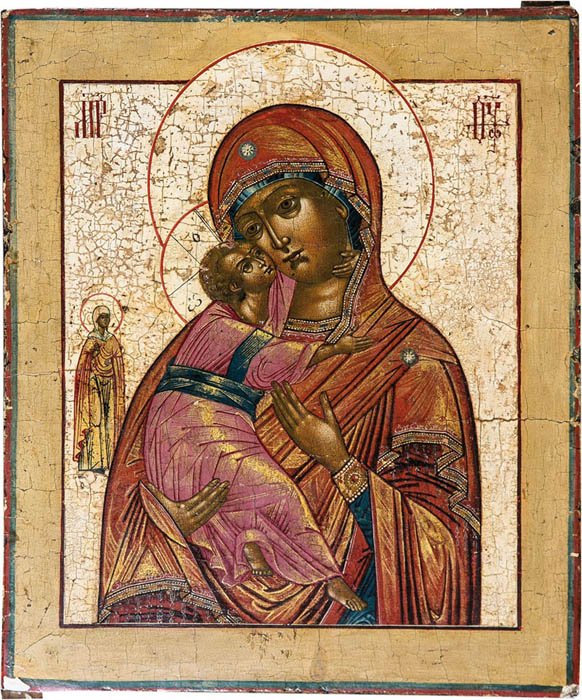
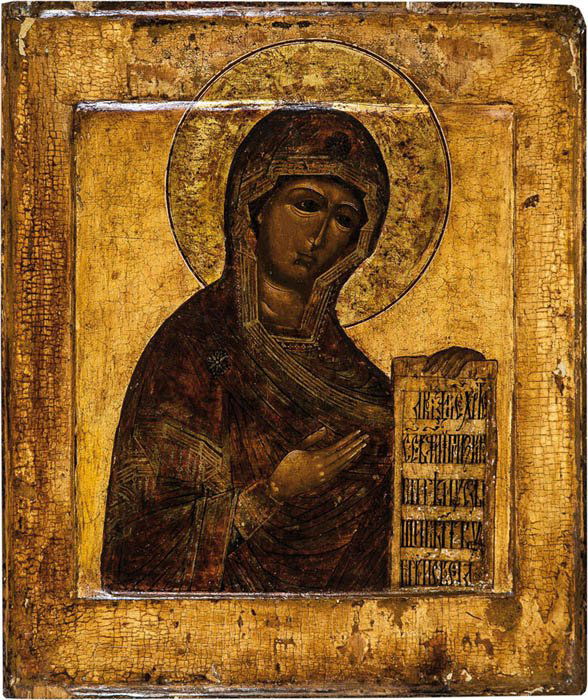



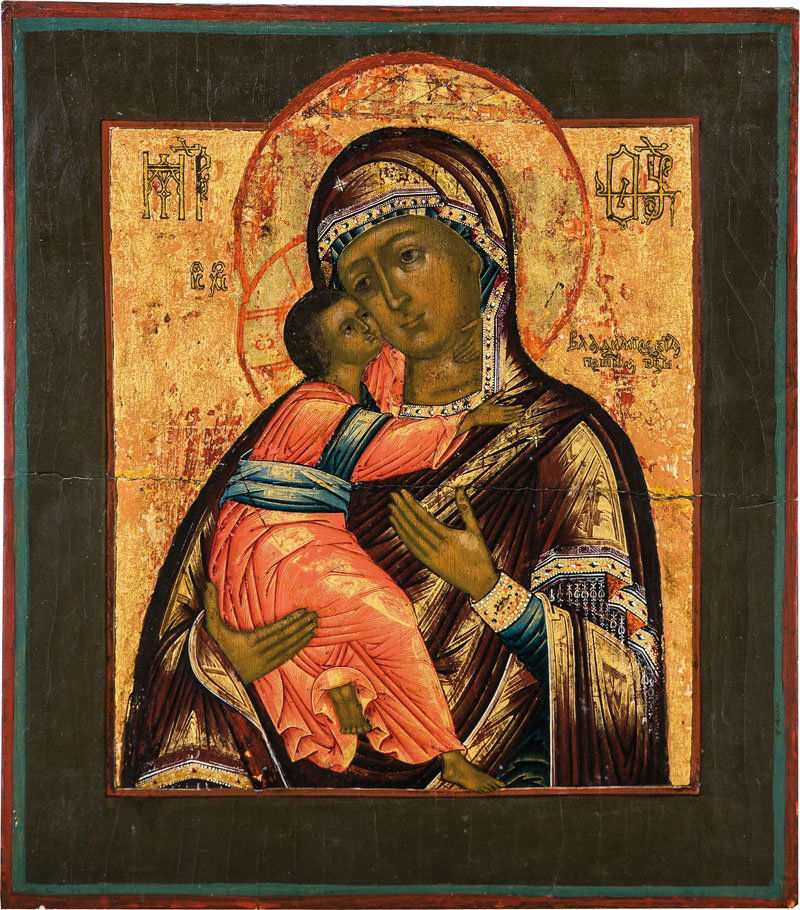

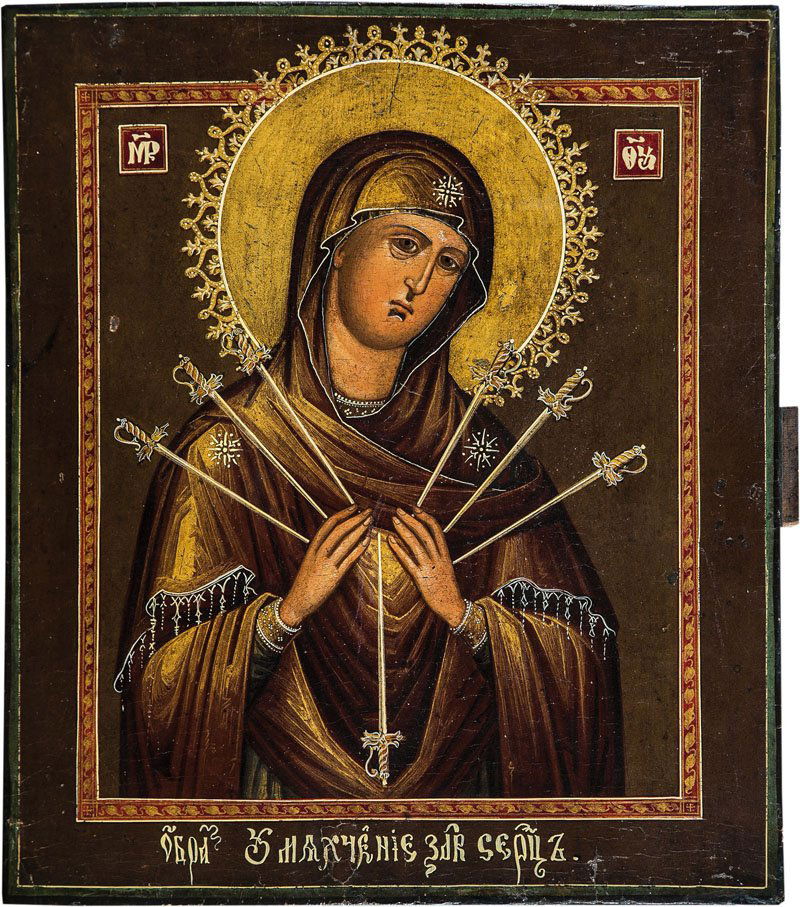
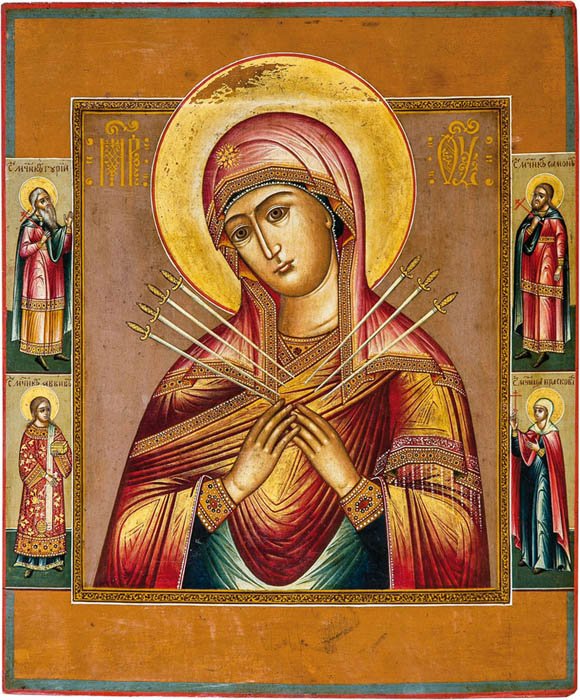
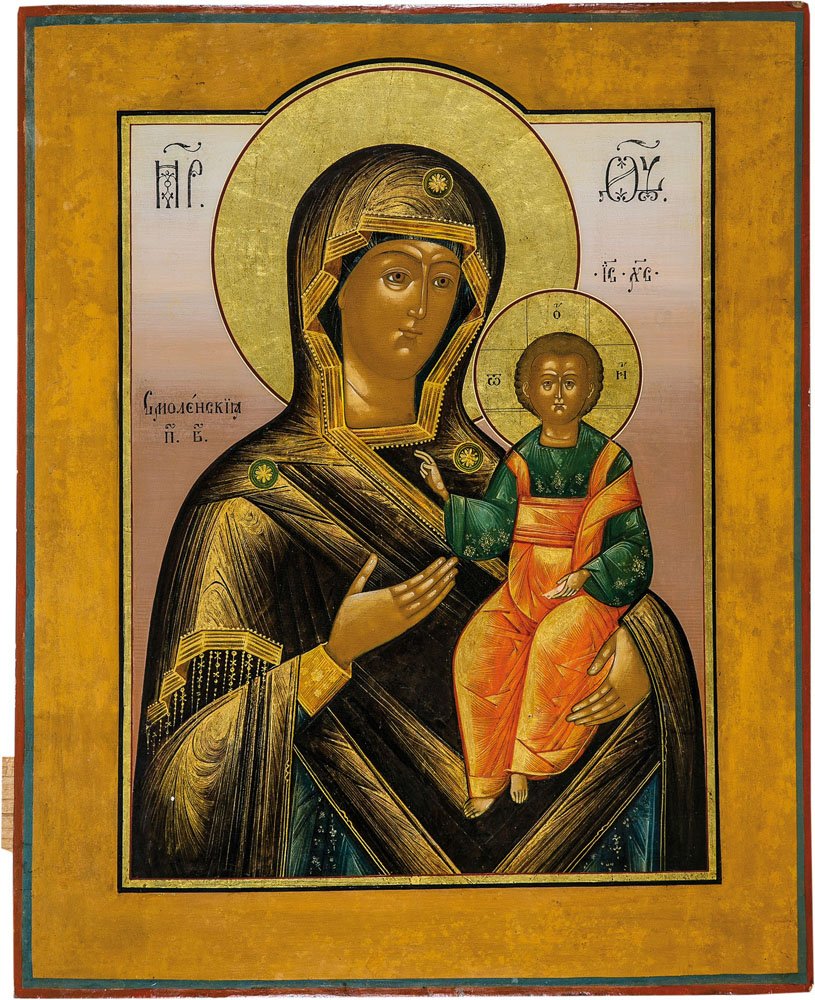


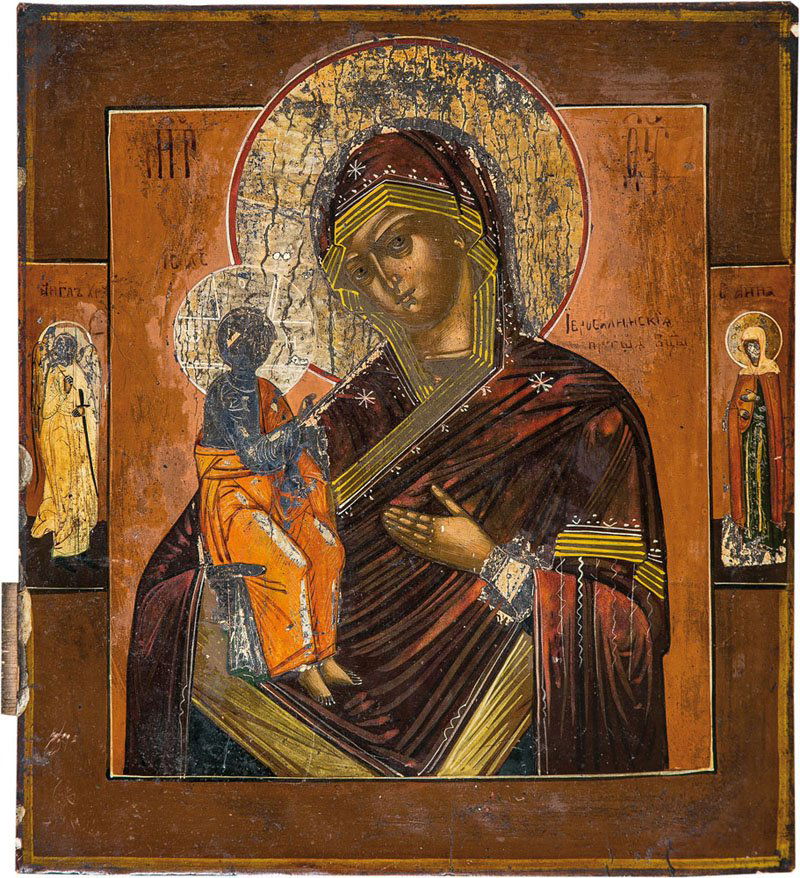
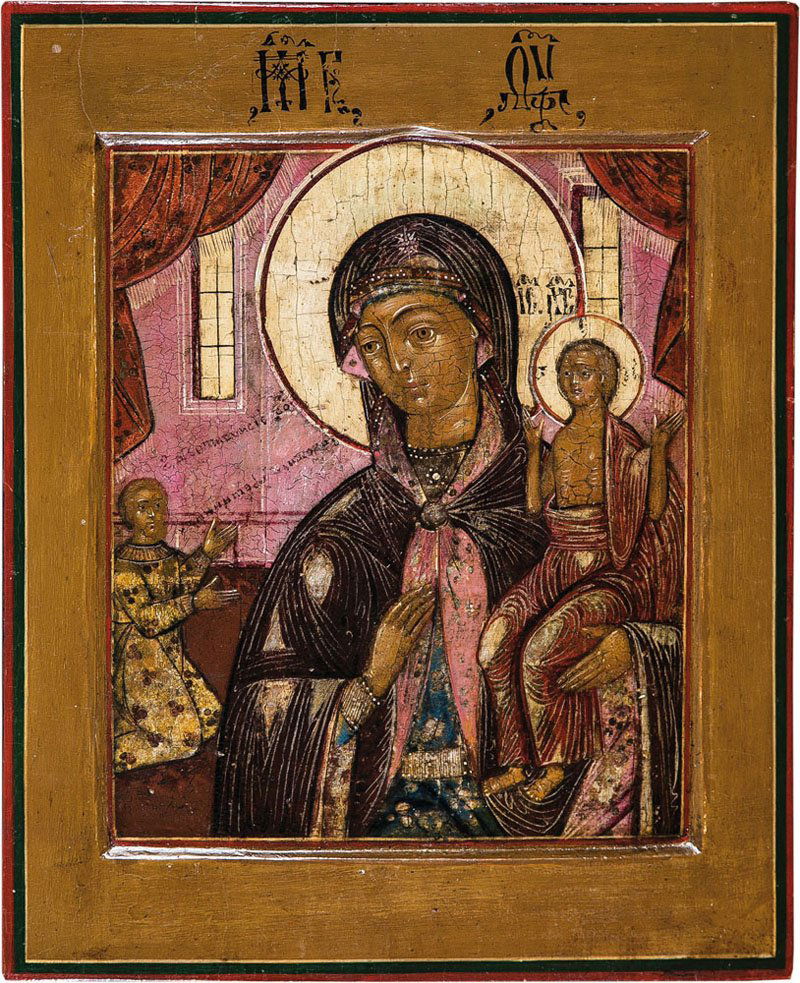
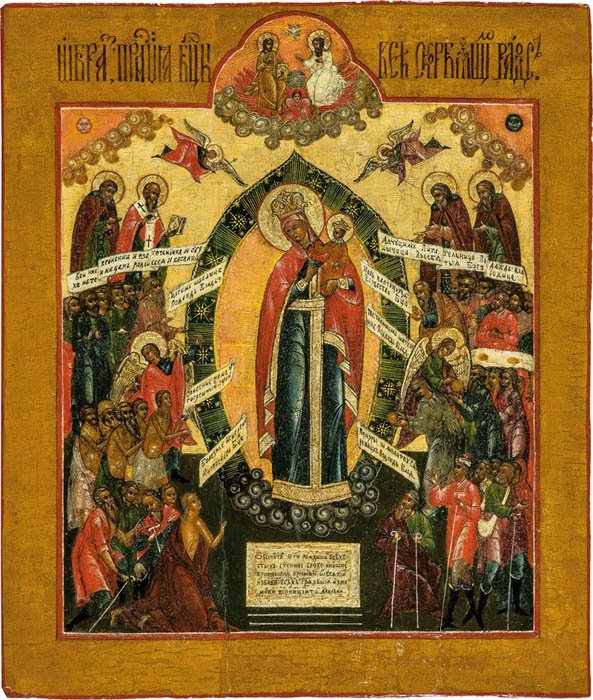


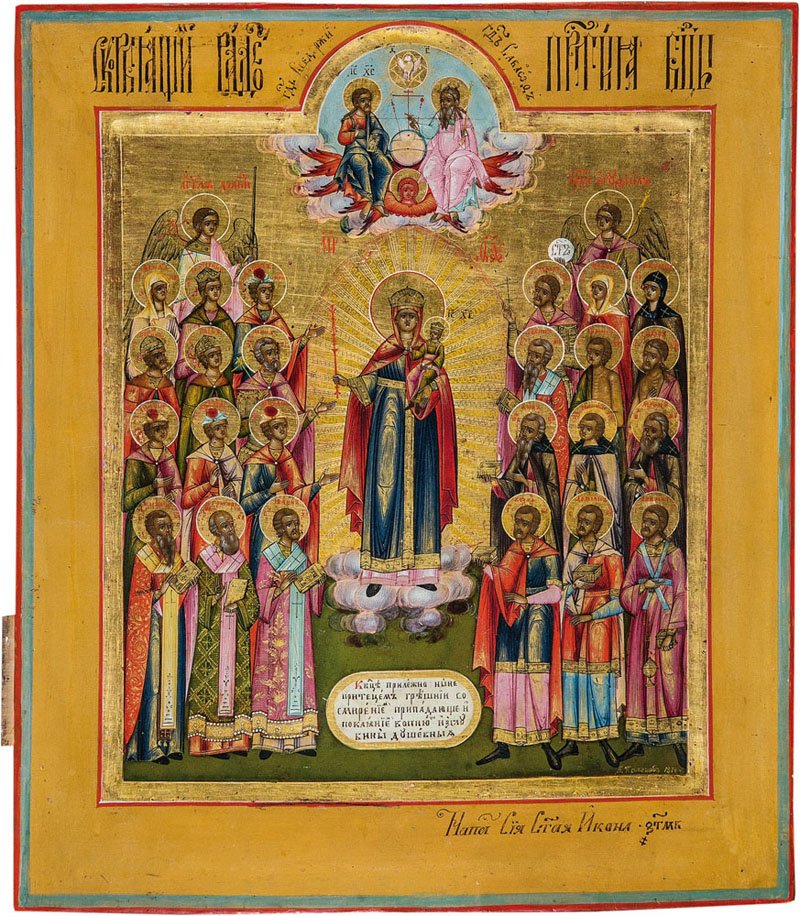
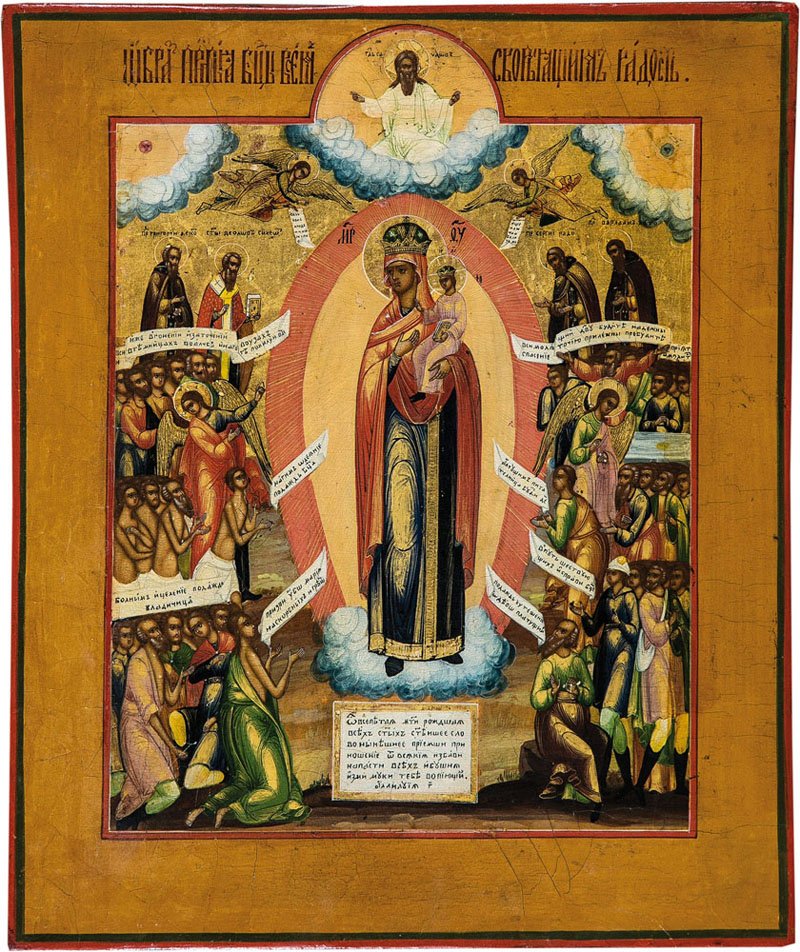



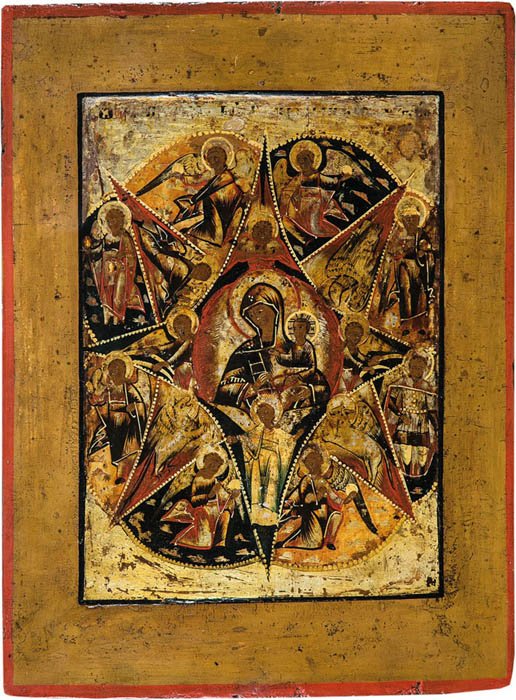

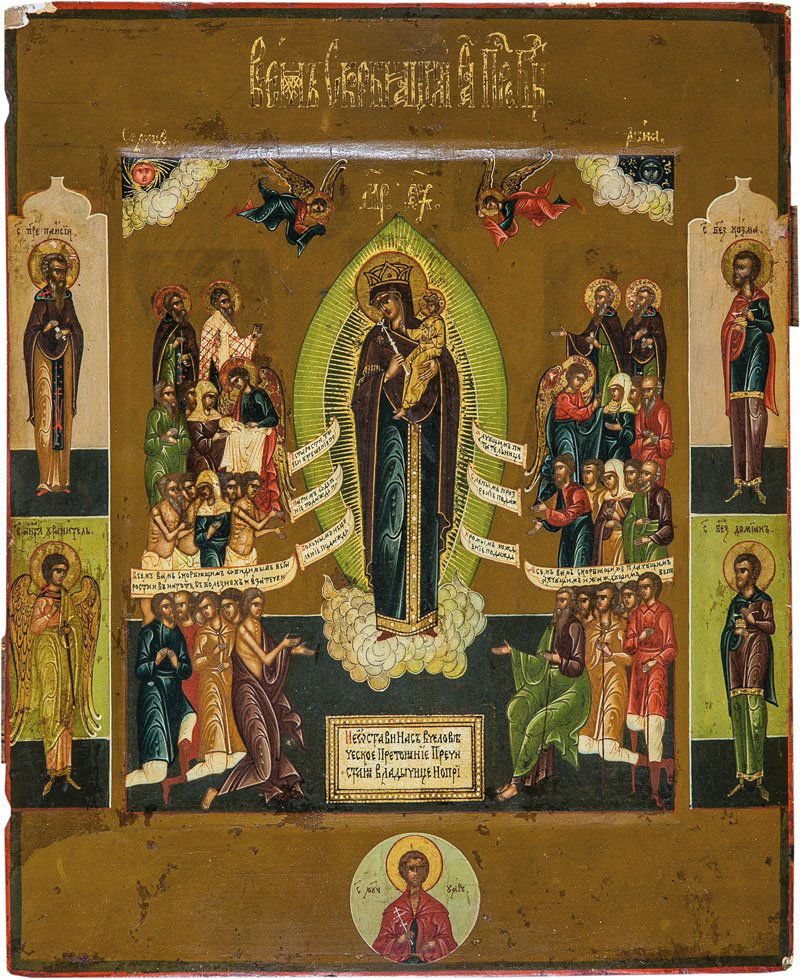
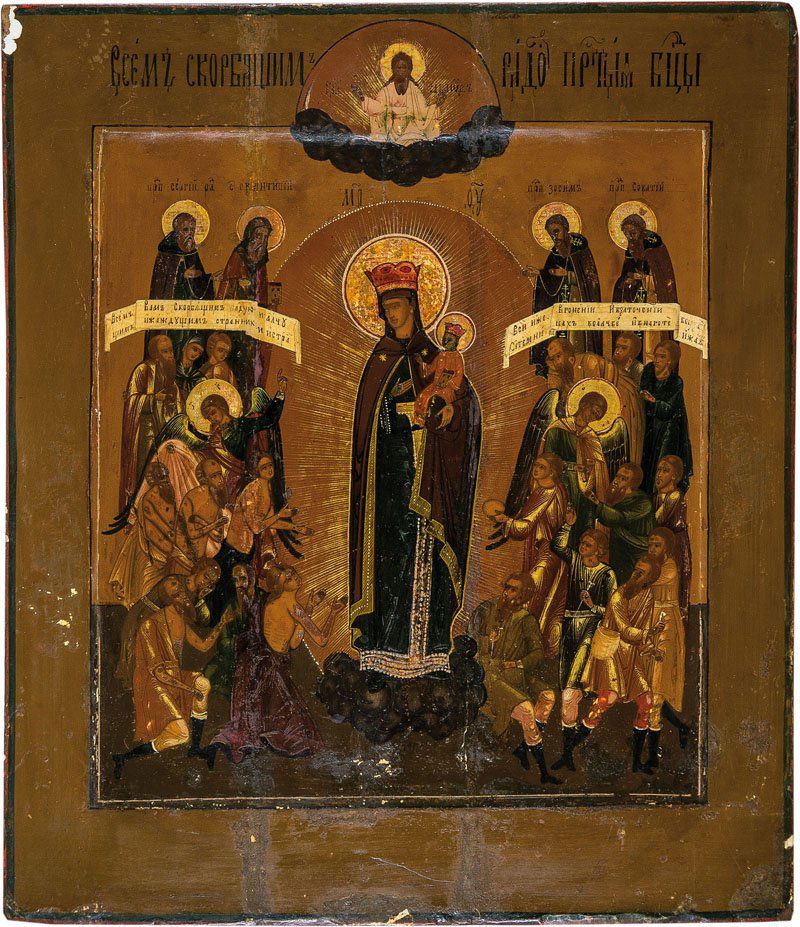
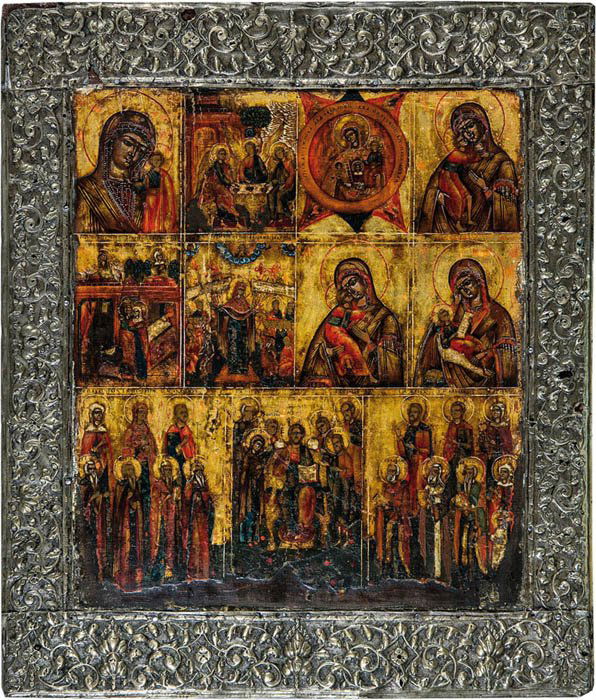

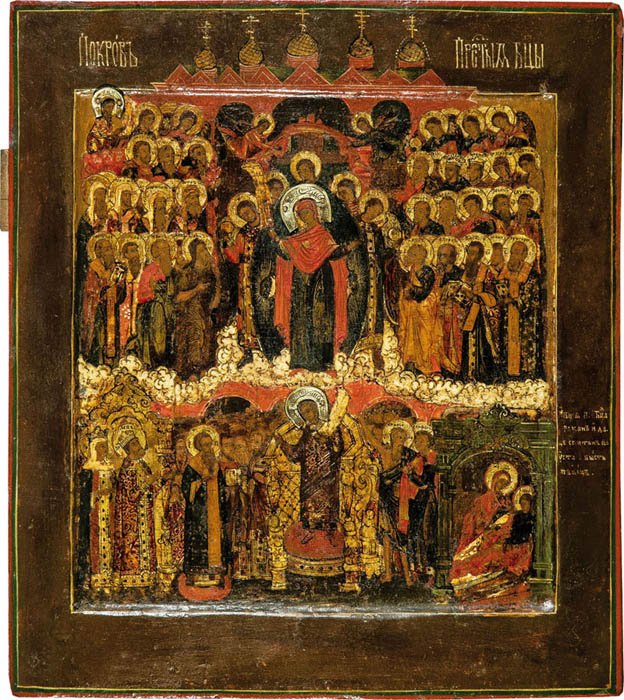
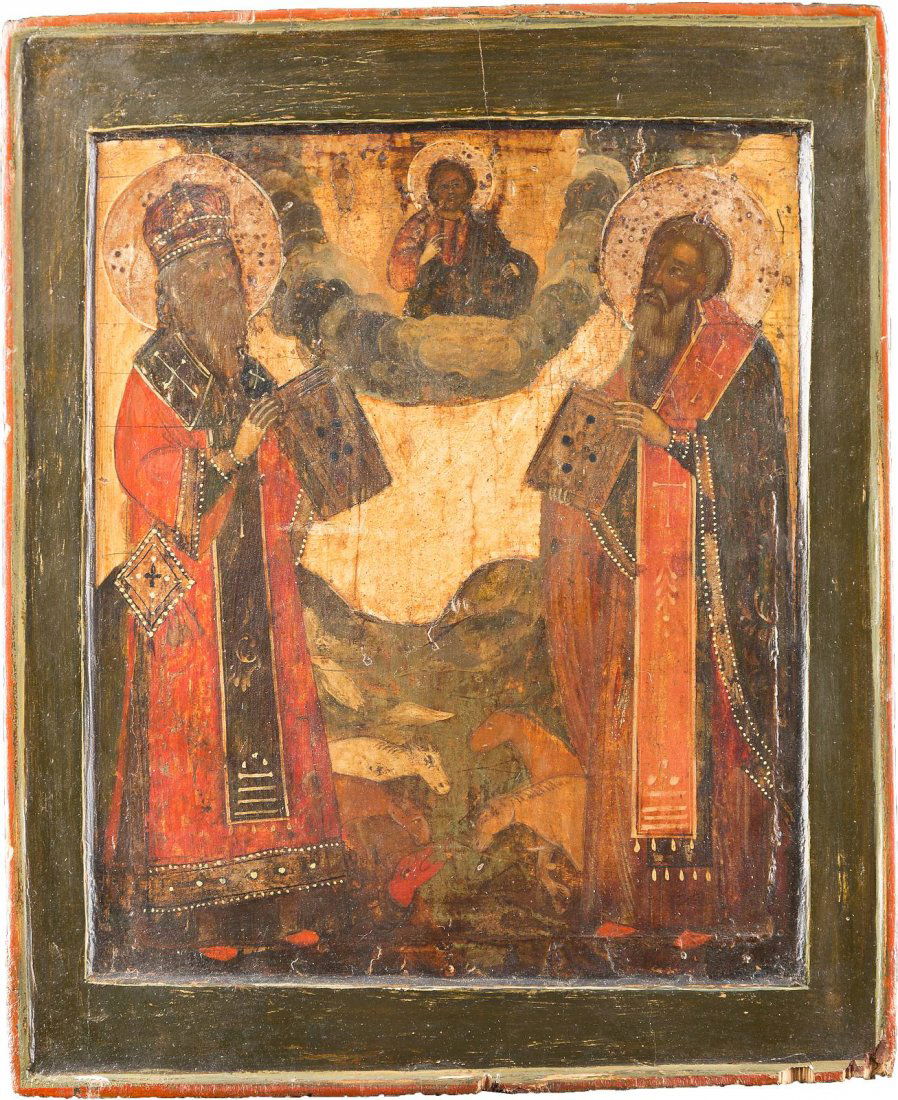
Please visit my other blogs: Art Collector, Mythology, Marine Art, Portrait of a Lady, The Orientalist, Art of the Nude and The Canals of Venice, Middle East Artists, 365 Saints and 365 Days, also visit my Boards on Pinterest
Images are copyright of their respective owners, assignees or others.
Some Images may be subject to copyright
I don't own any of these images - credit is always given when due unless
it is unknown to me. if I post your images without your permission, please tell
me.
I do not sell art, art prints, framed posters or reproductions. Ads are
shown only to compensate the hosting expenses.
If you enjoyed this post, please share with friends and family.
Thank you for visiting my blog and also for liking its posts and pages.


Excellent article which I enjoyed very much. Icon images are sized such that each one can be admired and reflected on. And the information on each of them was most appreciated. Thank you for posting.
ReplyDeleteThank you very much for your observations. I have enjoyed collecting them over the years :)
Deletetheres kind of a big issue on an icon piece shared by a famous entertainer ice cube . he is saying this is the earliest depiction of jesus . My question is how true is this and if not what is the history of this icon ?https://twitter.com/icecube/status/1269589523563868160/photo/1
ReplyDeleteThat is a tall question! But there is no credible likeness Christ out there...
ReplyDelete